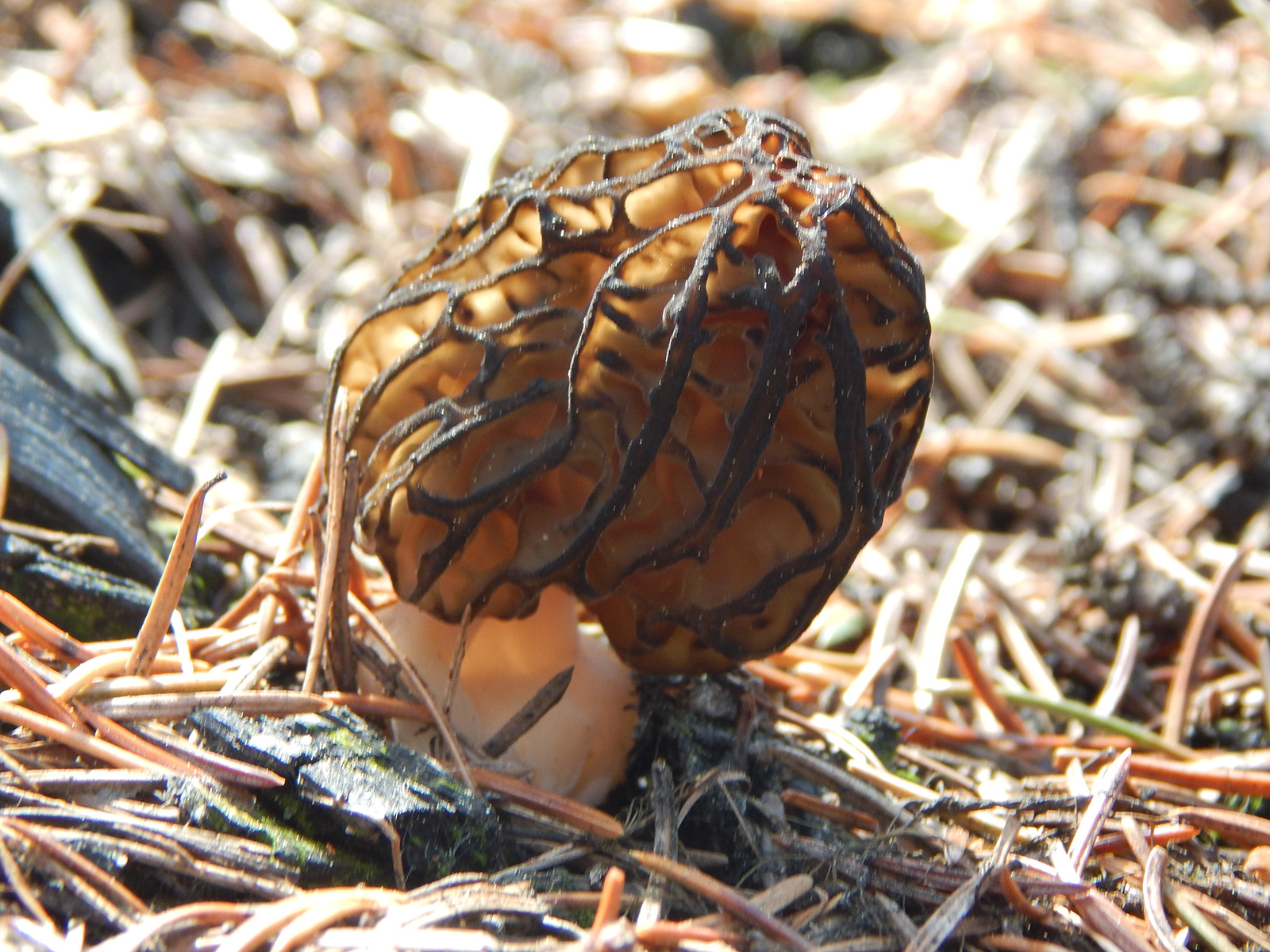Spring brings more than produce intentionally grown in local gardens – it brings the chance to forage for wild foods. Coveted morels are already appearing in pockets around the valley and will increasingly pop up in recently burned or cottonwood-dominated areas over the next several weeks. Now that the hunt is on, I spoke with local forager Dale Johnson about his favorite ways to cook these treasures. He has been gathering wild mushrooms for more than 25 years and leads semiannual foraging expeditions arranged by Whitefish Legacy Partners.
Johnson emphasized that the most important part of cooking wild mushrooms is being certain that the fungi you intend to eat are edible. When gathering mushrooms, he said, “you really need to make sure you know what you’re doing. If you’re not sure you’ve correctly identified a mushroom, don’t eat it.”
True morels, with their conical, honeycombed caps, are among the more easily identifiable edible mushrooms. But they have a doppelgänger: the false morel. To ensure you’re collecting true morels, slice the mushrooms lengthwise (a required practice if harvesting for personal use in Flathead National Forest) and confirm that they are completely hollow inside.
Johnson recommends fully cooking all mushrooms because raw ones contain proteins our stomachs don’t break down. As he put it, raw safe-to-eat mushrooms “won’t kill you, but you can get stomach cramps if you don’t cook them … that might make you wish you were dead.”
When cooking fresh morels, Johnson prefers two main techniques: grilling and dry sautéing. Cooking the mushrooms on their own, before adding other ingredients like butter or soy sauce, lets the fungi release some of their copious water and steam in their own juices.
• Grilled morels: Slice a half-dozen similar-size morels and thread them onto a skewer. Cook for a few minutes over a hot grill. When the edges are crispy, give them a light “wash” of soy sauce, sesame oil, ginger, garlic and rice vinegar and cook a little longer.
• Dry sauté: Heat a dry skillet and add mushrooms in a single layer, cooking without oil or butter until they release liquid and steam. Just before finishing, add a little ginger-soy sauce wash. For a breakfast variation, crack in a couple of eggs and top with cheese, adding a tiny dash of soy sauce at the end.
Really big fresh morels can be stuffed with cooked rice, sausage and onion and baked. I bake most stuffed mushrooms at 350°F for about 15 minutes. Consider a light basting of garlic-infused soy sauce partway through. Johnson also enjoy morels in classic mac-and-cheese, either vegetarian or with ham. Chop and dry sauté some morels to mix with the pasta for flavor, but keep enough halves to decorate the top.
If your harvest is bountiful, dehydrate the excess. I find it easiest to dry mushrooms in a dehydrator set around 110°F for several hours, but you can instead use a low-temperature oven or air-dry over several days.
Julie Laing is a Bigfork-based cookbook author and food blogger at TwiceAsTasty.com.
